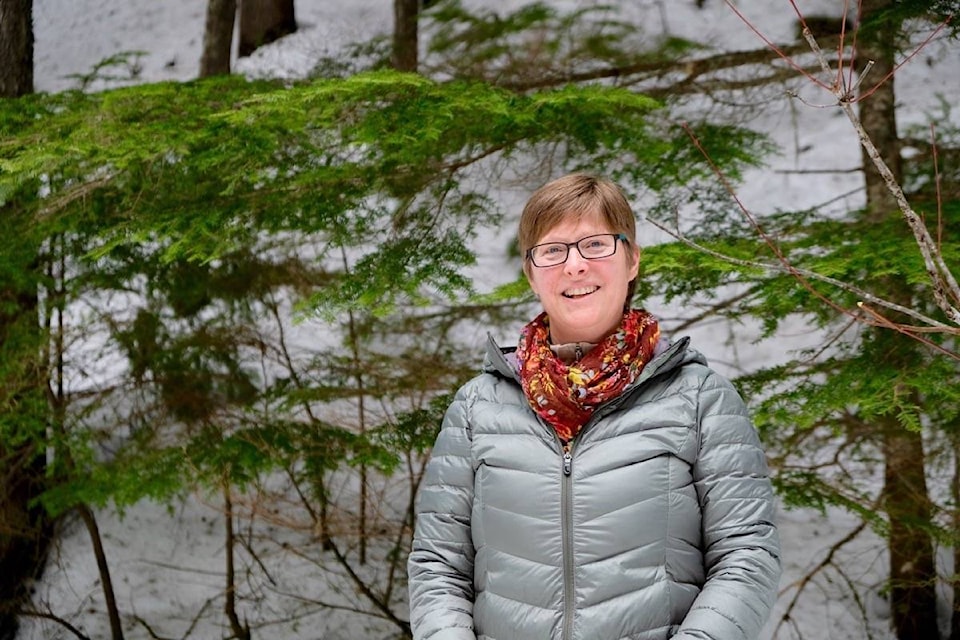After a forest stand has been logged or burned, how long does it take to hydrologically recover? In other words, when will snow accumulation and snow melt get back to the normal condition that would be found in a mature stand of timber?
Hydrology researcher Kim Green is attempting to answer that question in a forest near Blewett, assisted by Selkirk College students and specialized equipment.
“Forests intercept snow and as soon as you get rid of those forests, the dynamics, the energy, all changes, and you end up with more water coming into the system,” she says.
Free to grow
Traditionally, forest inventories use a condition called free to grow as a measurement of whether a stand of timber has recovered from cutting or fire.
Free to grow has traditionally meant the stand has reached two metres in height and has sufficient density.
“Once a stand has reached [two metres], the licensee’s planting and management obligations are completed,” Green says. “The stand goes back to the Crown and they are no longer responsible for it.”
But she said free to grow, as a benchmark, is out of date because it does not factor in hydrological recovery.
“Foresters want to know if what they are doing on the landscape is sustainable,” she says, adding that that is the purpose of her research.
“Recent studies from the Thompson-Okanagan now show that stands are only about 50 per cent recovered at nine metres.”
She said that research may not apply to the Kootenays because of differences in topography, forest type, and climate. So she’s doing a Kootenay-specific study.
Community-business partnership
Green’s is one of several projects funded by a $2 million grant to Selkirk College from the Natural Science and Engineering Research Council, a federal government agency. The grant was contingent on additional financial support from the forest industry.
Kalesnikoff Lumber, Interfor, Atco, Nakusp and Area Community Forest, Slocan Integral Forestry Cooperative, and the B.C forests ministry are also supporting the research.
A perfect research forest
The Blewett forest stand is the perfect location for this study, Green says.
“We have a range of stands that go from everything from a two-metre stand up to a fully mature forest and they are all immediately adjacent to each other, which is ideal.
“We are doing snow courses ,which are measuring the snow depth and snow water equivalent across these different stands, and then we also have this new technology, which is really exciting.”
That new tech is LiDAR, which “uses laser beams to reflect off the surface and bounce back, and it gives you a full 3D image of the area, and it is also imaging the snow pack surface.”
A new innovation includes a hand held LiDAR device that will map the snow surface over time.
“It will look at how the snow surface changes over time in the mature versus the juvenile stands versus the open stand.”
Green says she will have some answers and conclusions within a few months.
“But over time I want to scale this up so we are collecting data over a broader area and potentially using an aerial LiDAR to do it over a larger area.”
How changes affect stream flow
A second question Green’s research wants to answer is: what are the impacts of hydrological changes on the stream channel itself, including aquatic habitat and water quality?
“We are going to develop a hydrological model that will allow us to develop a virtual watershed, creating it in a computer setting and seeing how harvesting in different areas can impact stream flow.
“The hydrological model allows us to take trees off in the model and see how it influences stream flow for a strategic level understanding of where you can harvest in a watershed so as not to impact flows.”
bill.metcalfe@nelsonstar.com
Like us on Facebook and follow us on Twitter
